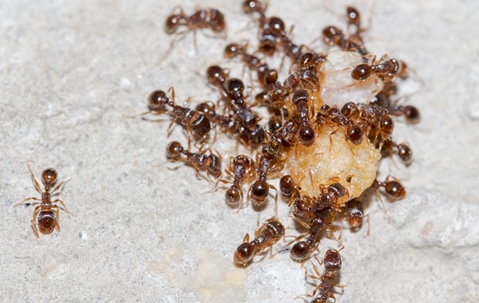Santa Clarita has a warm climate and diverse ecosystem, making it a haven for various ant species to thrive. While these tiny trailblazers can benefit the environment, their presence in homes can be less than welcome.
Identifying different ant species is the first step in effective pest control. In this guide, our experts at Excel Pest will help you explore common ant species, distinguish look-alike pests, understand the meaning of ant trails, and discuss the challenges of DIY ant control in Santa Clarita.
Distinguishing Between Common Look-Alike Pests In Santa Clarita Homes
Ants come in various shapes and sizes, and many homeowners often mistake them for other pests. Common look-alikes include termites, flying ants, and even winged ants.
Termites have straight antennae and a uniform waist, while ants have elbowed antennae and a constricted waist.
Flying ants are often confused with termites due to their similar appearance, but flying ants have a pinched waist and bent antennae. Recognizing these distinctions is the key to implementing the right control measures to get rid of ants.
Tiny Trailblazers: Identifying Ant Trails And Activity Patterns
Ants leave pheromone trails to communicate with other colony members. These trails can be visible lines on surfaces, guiding ants to food sources or nesting sites. Observing these trails and activity patterns can help you identify different types of ants and locate their entry points. Here are some of the differences between species:
- Argentine ants establish continuous trails, often along sidewalks, walls, or other linear surfaces. Their trails can extend over large distances.
- Notorious for their aggressive behavior, fire ants construct noticeable trails leading to their nests. These trails will be along the ground and often marked by loose soil. Fire ants are quick to respond to disturbances, and their trails can shift rapidly.
- Carpenter ants don't create continuous foraging trails. However, they leave behind distinct patterns associated with their nesting behavior. Carpenter ants are skilled woodworkers and often tunnel through decaying or moist wood. Trails may not be visible on surfaces, but the presence of wood shavings, known as "frass," near nesting sites indicates their activity.
- Odorous house ants form well-defined trails along baseboards, countertops, and other areas where they search for sugary or greasy substances.
Effective pest control starts with understanding ant behavior, and identifying their trails and activity patterns is one of the best ways to distinguish which ant species you're facing.
DIY Ant Control Is Not Usually An Easy Solution
While there are numerous DIY ant control methods circulating online, their effectiveness is often limited. Ant colonies can be extensive and hidden within walls or underground, making reaching and eliminating them a challenge. Many over-the-counter insecticides only provide temporary relief and may not address the root cause of the infestation. Additionally, misidentifying the ant species can lead to the use of inappropriate control methods, only making the infestation more difficult to eradicate.
Seeking Expert Assistance For Effective Ant Control
When facing a reoccurring ant infestation, seeking professional help is often the most effective solution for ant removal. Pest control experts have the knowledge and experience to identify ant species accurately, assess the extent of the infestation, and implement targeted control measures. Excel Pests's team of skilled technicians understands the unique challenges posed by different ant species in the Santa Clarita region.
If you're tired of battling ant infestations in your Santa Clarita home, it's time to bring in the experts. Contact Excel Pest today for a comprehensive ant inspection and customized control plan. Excel Pest is your proactive partner in pest-free living.

